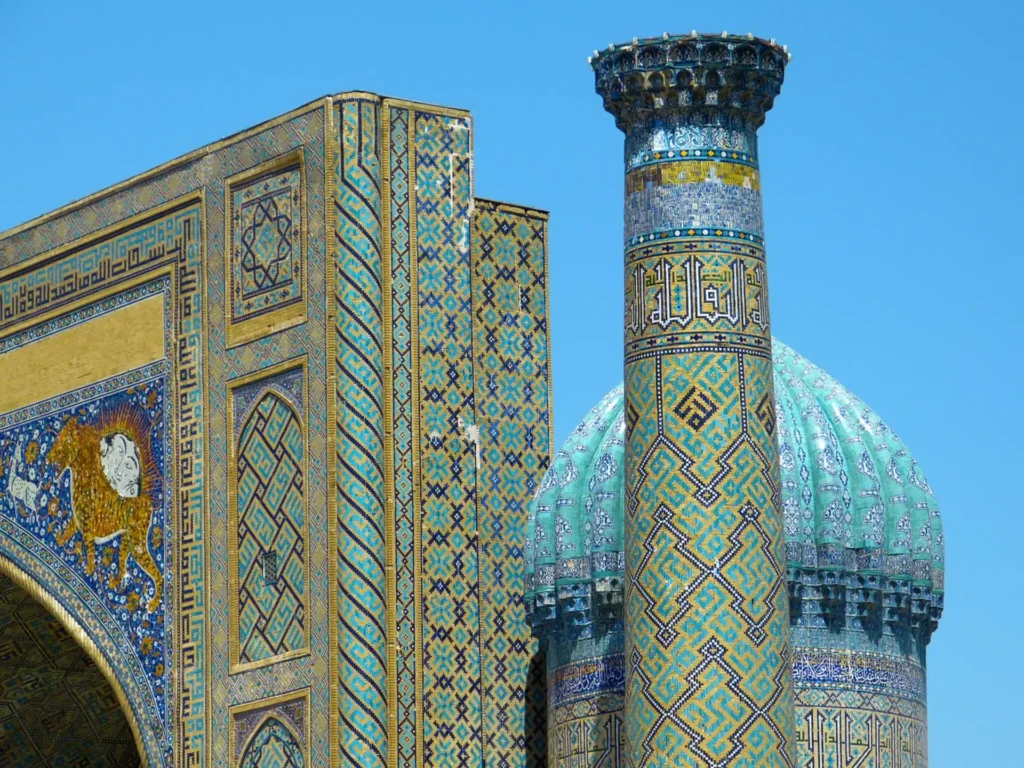
10 things you didn’t know about Uzbekistan currency
What is the currency of Uzbekistan?
Uzbekistan’s currency is the Uzbekistani so’m, abbreviated as the code UZS. The currency symbol is “сўм,” which can be translated as “so’m.” The pronunciation is similar to “soom” in English.
Buy your so’m now
Get the best rates for Uzbekistani so’m online with Manor FX
Prepare for your journey to Uzbekistan by ordering your Uzbekistani so’m from Manor FX today. Take advantage of our great exchange rates and get more UZS cash to spend.
Have your Uzbekistani so’m banknotes securely delivered to your home or office. You can also collect them from the Manor FX bureau near Heathrow.
Benefit from quick delivery and an easy online ordering process for your Uzbek so’m travel money.
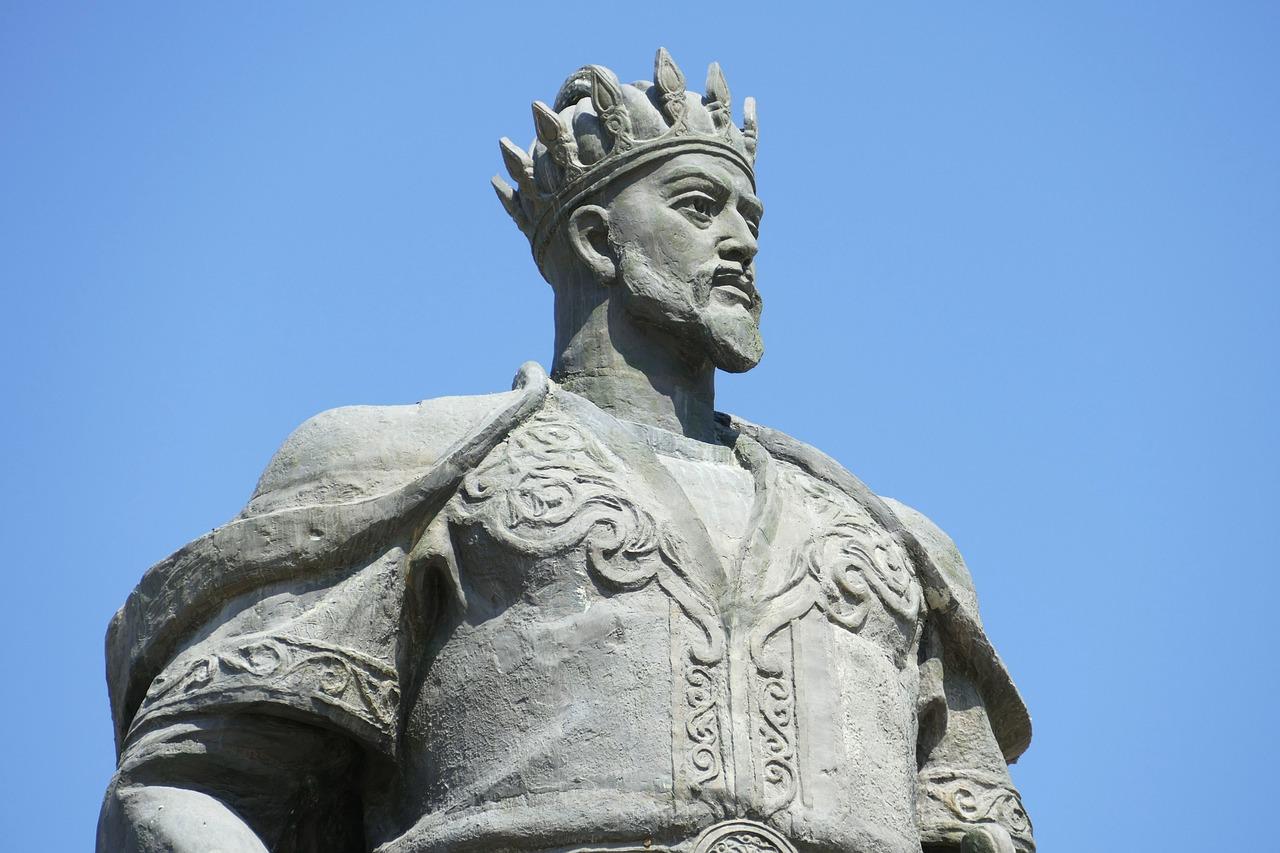
A brief history of Uzbekistan currency
The history of Uzbekistan’s currency, the Uzbekistani so’m (UZS), reflects the country’s transition from Soviet rule to independence.
The so’m was introduced on July 1, 1994. It replaced the Soviet ruble at a rate of 1 so’m = 1,000 rubles. The introduction was a significant step in establishing Uzbekistan’s economic independence.
Initially, the so’m suffered from high inflation, common in post-Soviet states during their early years of independence. Over the years, the Uzbek government implemented various measures to stabilise the currency and control inflation.
In the early 2000s, new banknotes were introduced to simplify transactions and reflect Uzbek cultural heritage.
More recently, Uzbekistan has focused on improving the so’m’s stability and fostering a more open and market-oriented economy.
This includes making the currency fully convertible in 2017. A significant reform aimed at attracting foreign investment and boosting economic growth.
Today, the so’m remains a symbol of Uzbekistan’s national identity and economic aspirations.
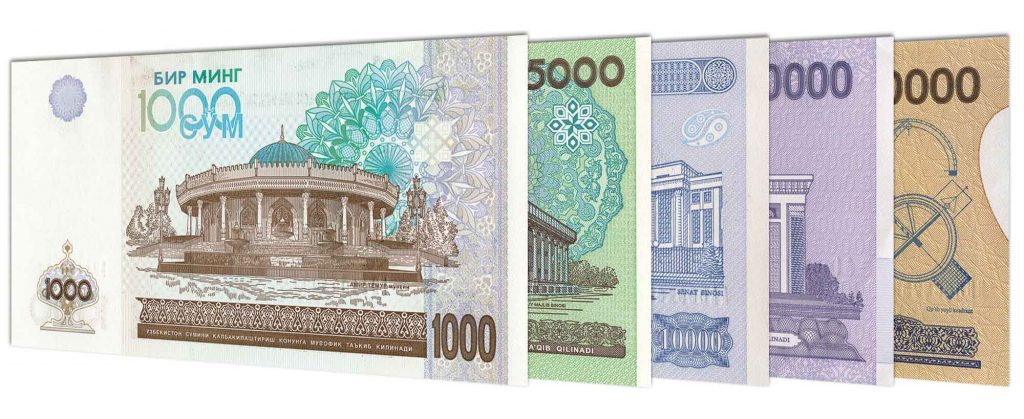
Currency Uzbekistan banknotes
Uzbekistani banknotes depict the country’s cultural heritage and historical landmarks. Each denomination is distinct, but they all feature vibrant colours and intricate designs that reflect various aspects of Uzbek life and history.
- 2,000 so’m: The front of this note displays the Bukhara Arch, constructed in the 1st century BC. On the back, it features the ruins of the ancient caravan route of Poykend, dating back to the 4th to 3rd centuries BC. The dominant colour of the note is red.
- 5,000 so’m: The Sher-Dor Madrasa, a 17th-century architectural gem located in the historic center of Samarkand, adorns the front of this note. The back shows a 10th-century jug. The note is primarily green.
- 10,000 so’m: This denomination highlights the Kukeldash Madrasah, a medieval educational institution in Tashkent built in 1570, on the front. The back depicts Shoshtepa, an ancient clay town with significant historical structures. The note is mainly blue.
- 20,000 so’m: The front features Koi Krylgan Kala, an archaeological site near the village of Taza-Kel’timinar, while the back illustrates a camel-shaped artefact from the first century BC. This note has a pale background accented with dark purple and blue.
- 50,000 so’m: This note is designed for larger transactions and shows the State Museum of Timurid History in Tashkent on the front, celebrating artefacts from the Timurid dynasty.
- 100,000 so’m: Itchan Kala, the enclosed inner town of Khiva, is showcased on the front of this note. The back features a Khorezm silver coin from the first century BC. The note’s primary colour is yellow.
- 200,000 so’m: The front of this note presents the Palace of Khudayar Khan in Kokand, the residence of the last ruler of the Kokand Khanate. The back depicts an ancient stone amulet shaped like a two-headed snake. The main colour of the note is turquoise.
Each banknote serves the practical purpose of currency whilst also telling a story of Uzbekistan’s history, culture, and architectural grandeur.
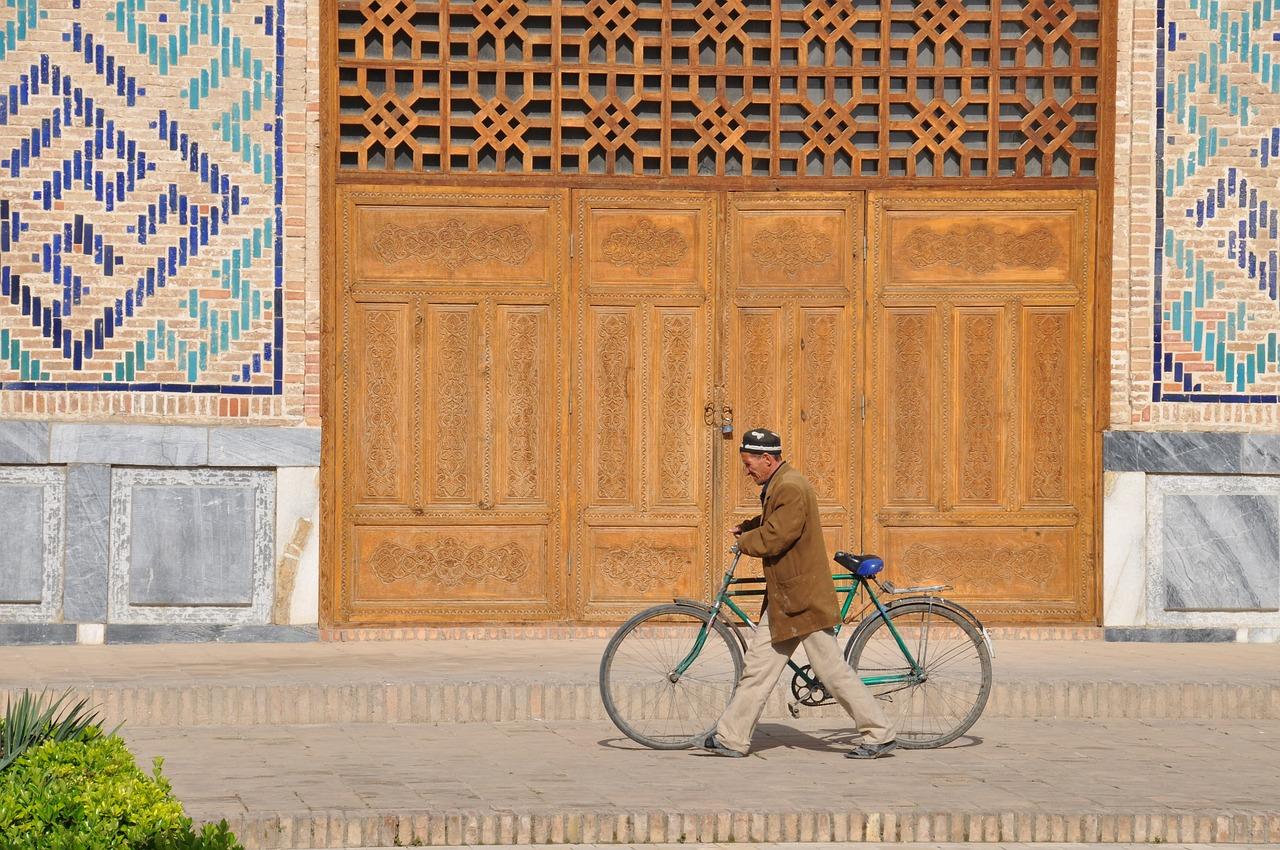
Buy your so’m now
Retired Uzbek banknotes
Uzbekistan’s older banknotes are a time capsule. They capture the country’s rich heritage with images of famous places like the Sher Dor Madrasah and Registan Square. These spots were major centres for trade and learning on the Great Silk Road.
The designs on these notes, used in Uzbekistan before recent changes, highlight the country’s long history of education and commerce.
The Bank of Uzbekistan issues these banknotes and includes designs that honour important figures such as Al Hakim At-Termizi. His inclusion on the currency celebrates Uzbekistan’s contributions to science and philosophy.
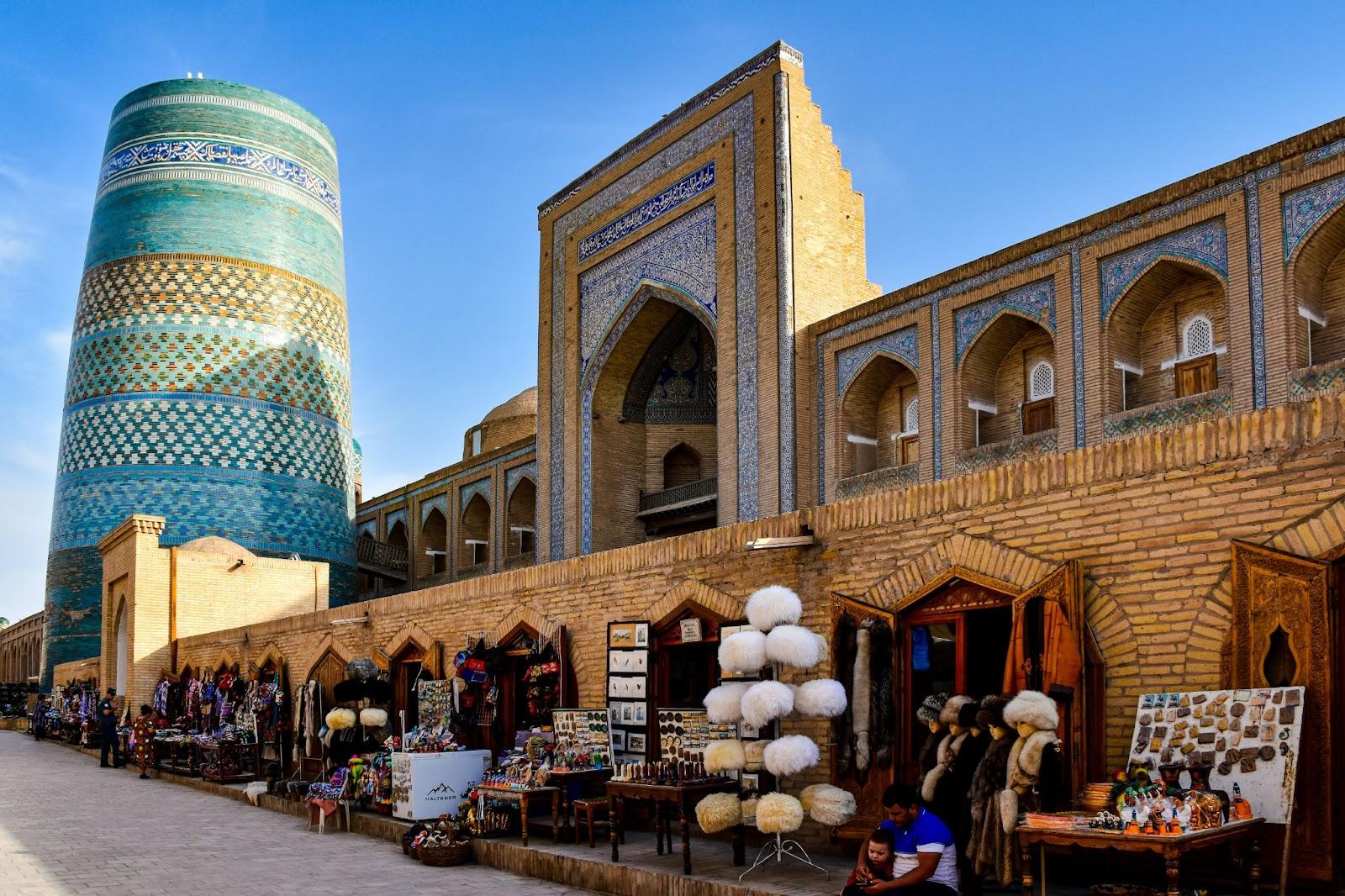
Uzbekistan coins
Uzbekistan also circulates coins, which, like the banknotes, reflect the nation’s heritage and values:
- 50 so’m: This coin features the number 50 surrounded by traditional Uzbek patterns that represent the nation’s rich cultural heritage.
- 100 so’m: The coin features the Independence and Goodness monument in Tashkent, along with the number 100, celebrating Uzbekistan’s freedom and values.
- 200 so’m: On this coin, a tiger is depicted within an archway from the Sher-Dor Madrasah, complemented by the number 200 and a rising sun pattern, symbolising power and a new dawn.
- 500 so’m: This coin showcases the Palace of International Symposiums, highlighting its architectural beauty. The denomination is displayed prominently below.
- 1,000 so’m: The largest of the series, this coin features the Center of Islamic Civilization in Tashkent, with the number 1,000 inscribed below, honouring Uzbekistan’s historical contribution to Islamic culture.
These coins facilitate daily transactions while reminding users of the nation’s heritage and values.
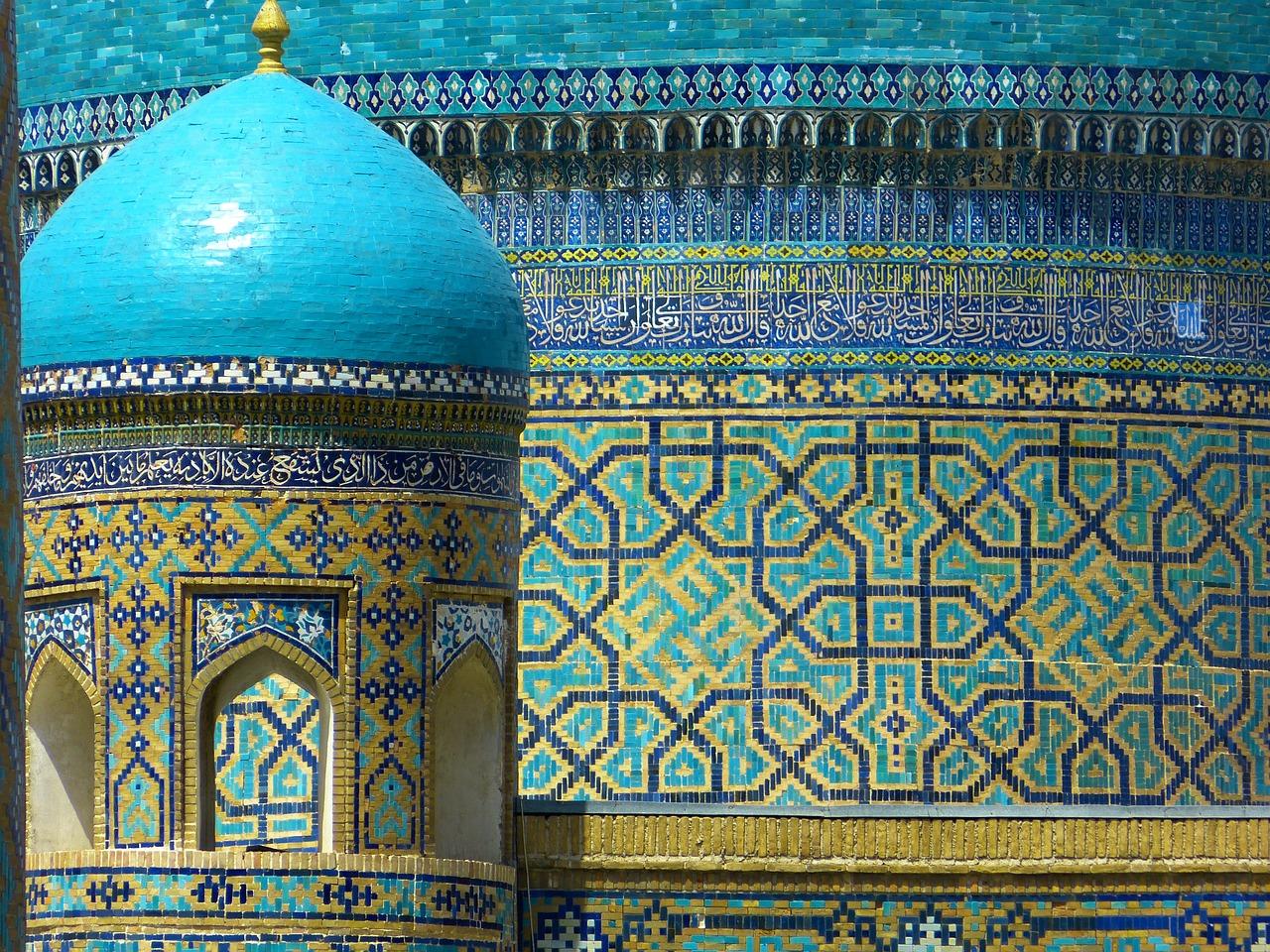
10 things you didn’t know about currency used in Uzbekistan
Here are ten intriguing facts about the currency used in Uzbekistan that might surprise you:
- Historical blend. The Uzbekistani so’m beautifully integrates modern graphic elements with images of historical and cultural landmarks. Notable examples include the Registan in Samarkand and the Amir Timur Museum in Tashkent. These designs on the currency showcase Uzbekistan’s architectural marvels while reflecting its deep historical roots and cultural richness. The so’m connects the past with the present in everyday transactions.
- Sophisticated security. To combat counterfeiting, recent series of the Uzbekistani so’m incorporate advanced security features. These include holograms that change appearance with the angle of light, watermarks that are visible when held against light, and UV-sensitive elements that glow under ultraviolet light. These technologies ensure the authenticity of the currency.
- World’s least valued currency. Historically, the Uzbekistani so’m has faced periods where it was one of the least valued currency units globally. This was primarily due to high inflation. However, recent economic reforms and stabilisation efforts have aimed to improve the value and stability of the so’m, enhancing its credibility both domestically and internationally.
- Cash-is king. Uzbekistan prefers using cash for most transactions, particularly in non-urban areas. This preference necessitates the circulation of high-denomination bills, such as the 100,000 so’m note, to enable large purchases and reduce the physical bulk of money that people need to carry.
- Cultural symbols. The Uzbekistani currency often features cultural symbols, such as the Khumo, a mythical bird that represents happiness and freedom. This bird is prominently displayed on coins, reinforcing national identity and cultural heritage through the currency.
- Language and script. Reflecting Uzbekistan’s linguistic diversity and history, banknotes are printed in both the Latin and Cyrillic alphabets. This dual script usage caters to different age groups and preferences, stemming from the country’s transition from Soviet influence to a more independent linguistic identity.
- The So’m’s name. The name “so’m” translates to “pure” in Uzbek, alluding to the purity of gold. This nomenclature is deeply tied to the region’s history as a centre of wealth and commerce, particularly during the times of the Silk Road.
- Collector’s delight. Currency collectors highly value early issues of the Uzbekistani so’m for their unique designs and the historical moments they represent, especially those released shortly after Uzbekistan gained independence in 1991. These notes are sought after for their rarity and historical significance.
- Celebrity designs: Some of Uzbekistan’s banknotes feature the celebrated Uzbek poet, Alisher Navoi, who lived during the 15th century. Known for his profound influence on Central Asian literature, his works also contributed to the development of the Uzbek language and are celebrated in national festivals.
- Numismatic rarity. For numismatists or currency collectors, Uzbekistani coins are a rare and intriguing collectable. Their distinctive designs and limited circulation outside Uzbekistan make them prized additions to any collection, celebrated for their uniqueness and artistic value.
FAQs
Many people are unfamiliar with what to look for when buying currency for Uzbekistan as it’s not as common as the euro or the dollar.
Often, people search for terms like “Uzbekistan currency,” “currency of Uzbekistan,” “currency in Uzbekistan,” or “currency used in Uzbekistan” when they are actually looking to obtain Uzbekistani so’m. Now you know for next time!
Yes, we sell Uzbekistani currency. You can buy s’om online and receive them quickly and safely at your home or office through Royal Mail Special Delivery Guaranteed®.
Alternatively, you can collect them from our travel money shop near Heathrow. Click here to exchange money and buy Uzbekistani so’m online.
Why buy Uzbekistan currency before travel?
Even though new policies within Uzbekistan are promoting the use of credit cards and bank cards, many businesses and service providers in Uzbekistan only accept local currency, especially in less urban areas.
As a visitor, it’s important to avoid the black market for money exchanged in Uzbekistan. Though the rates might look tempting, there are risks of legal trouble and fake money.
It’s safer to change your money with us here at Manor FX before you leave.
Yes. If you need to sell Uzbekistani so’m, follow this link to convert your Uzbekistani so’m to pounds.
Simply click on ‘sell currency’ and choose ‘UZS Uzbekistani so’m.’ We offer competitive currency exchange rates for your leftover foreign currencies.